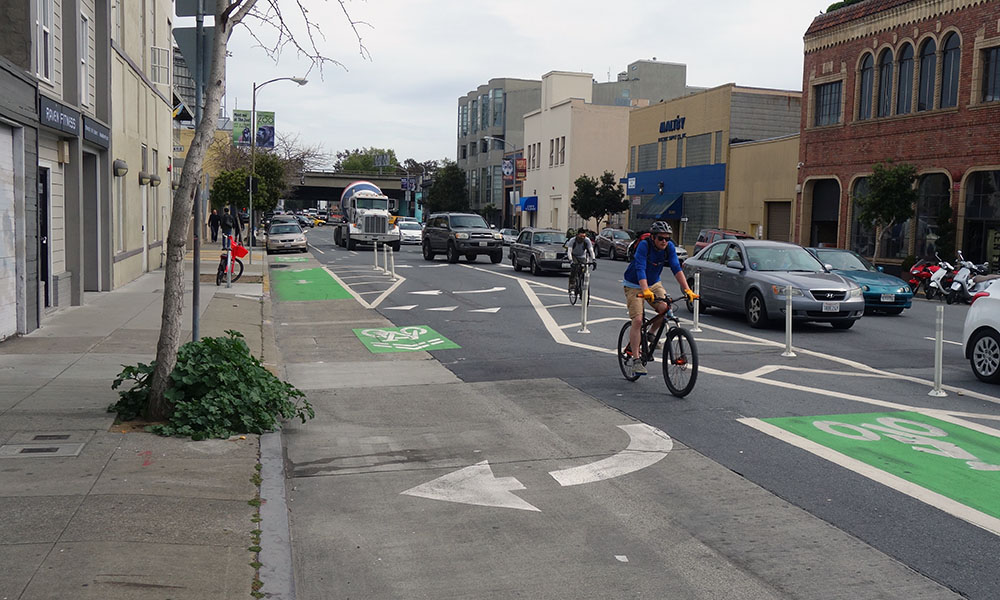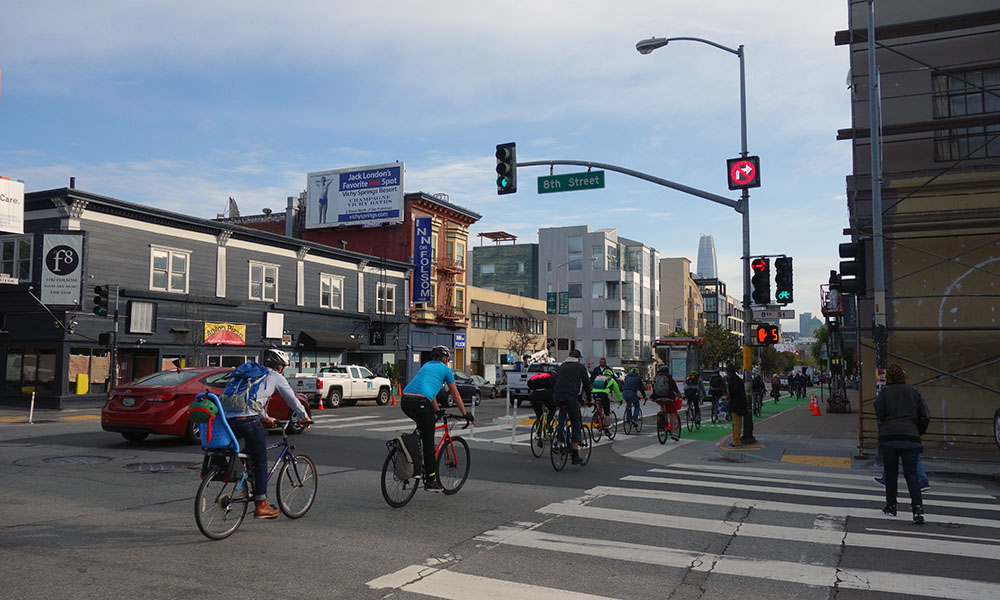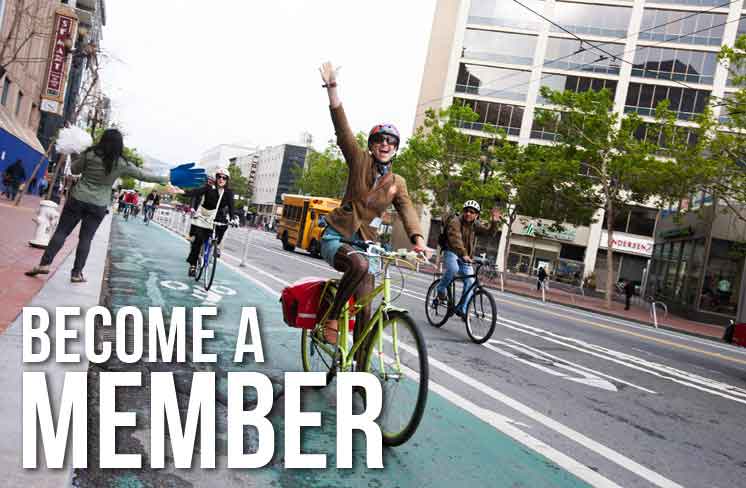While we continue to encourage the City to deliver both long- and short-term safety improvements across San Francisco’s streets, we’re also learning of some deficiencies — and fixes! — for some short-term redesigns.
Over the past few years, we’ve seen protected bicycle infrastructure implemented faster than ever before, but these near-term projects often have gaps in protection, especially at intersections.
Major street transformations have gone from planning to completion in less than a year and we can push for better bike lanes, faster, although it also means that designs are constrained by time and resources.
In SoMa near-term projects are the way to go in the short-term. Because our busiest bike routes need protection, now, parking protected bike lanes on Seventh, Eighth and Folsom were fast-tracked. As these projects have gone in the ground we’ve heard from you, our members, that the protection is great, but the mixing zones at intersections still don’t feel completely safe.

A mixing zone in SoMa
Mixing zones are where turning vehicles and people riding mix before proceeding through an intersection. The idea is that they create a predictable area for cars to yield to people biking, but in practice they don’t always work as designed.
Enter the bike-first intersection. Last week, as a part of the Folsom near-term protected bike lanes, a bike signal at Eighth and Folsom was installed. Here are some of the benefits to this treatment:
- Priority for people biking: While people driving see a red turn arrow, people biking seen a green bike icon, giving people biking an unimpeded path forward and a head start over turning vehicles.
- No more zig-zag: The signal allows people riding to remain curbside right up to the intersection, eliminating the “jog” to get back into the bike lane to and from a mixing zone.
- Clear signals: Familiar signal heads make it clear to drivers who has the right of way, unlike the yield markings, or shark teeth, at mixing zones, which many people do not understand indicates that they should yield.
This treatment is a possibility for some of the other protected bike lanes in SoMa and citywide, so your feedback as people biking is more important than ever. We’ll watch and listen carefully, and we’re pushing the SF Municipal Transportation Agency to do the same.
If you have feedback or questions related to this new treatment, please reach out at charles@sfbike.org.


